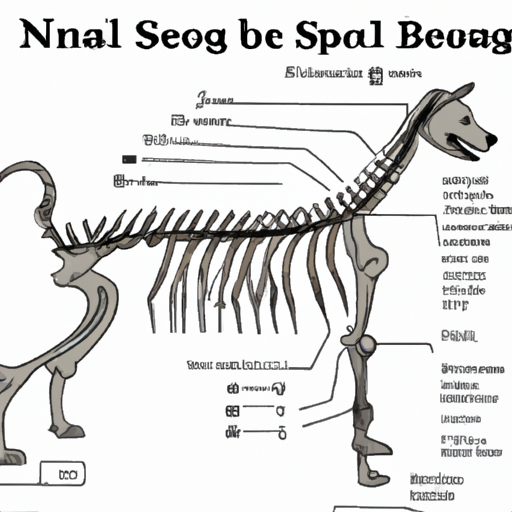As a caregiver, understanding the anatomy of your furry friend can be incredibly beneficial. It can assist in comprehending their mobility, their health, and even their comfort levels. One of the most central, yet often overlooked, parts of a dog’s anatomy is its spine. The spine, made up of individual bones called vertebrae, plays a significant role in a dog’s movement and overall health. So, let’s delve into the question: “how many vertebrae do dogs have?”
Understanding the Dog’s Vertebrae
Your dog’s spine, much like your own, is a complex structure comprised of individual vertebrae. These vertebral bones are categorized into five distinct regions:
- Cervical Vertebrae: The neck region, consisting of seven vertebrae.
- Thoracic Vertebrae: The chest region, housing thirteen to fifteen vertebrae.
- Lumbar Vertebrae: The lower back region, made up of seven vertebrae.
- Sacral Vertebrae: The pelvic region, fused together into one bone.
- Caudal Vertebrae: The tail region, containing anywhere from six to twenty-three vertebrae.
So, the total number of vertebrae in a dog can range from 44 to 60, depending on the length of their tail.
Importance of the Vertebrae in Dogs
The vertebrae in your dog’s spine serve several crucial roles. They provide structural support, protect the spinal cord, and facilitate movement. Each vertebra is separated by a soft, gel-like substance called the intervertebral disc. This disc acts as a shock absorber, preventing the vertebrae from grinding against each other.
A healthy spine allows your dog to run, jump, and play without discomfort. If your dog’s vertebrae or intervertebral discs become damaged or diseased, it can lead to pain, paralysis, or other serious health problems.
Common Spinal Problems in Dogs
Unfortunately, dogs can experience a variety of spinal issues. The most common include:
- Intervertebral Disc Disease (IVDD): This condition occurs when the intervertebral discs degenerate, causing severe pain and possibly paralysis.
- Spondylosis: This is a degenerative disorder that can cause spinal pain and stiffness.
- Wobbler Syndrome: This is a neurological disease that affects the cervical spine, causing a wobbly gait.
If you notice changes in your dog’s behavior, mobility, or comfort levels, it’s crucial to consult a veterinarian immediately. Early detection and treatment can significantly improve your dog’s prognosis.
Taking Care of Your Dog’s Spine
Maintaining your dog’s spine health is just as important as regular exercise and a balanced diet. Here are some tips to help:
- Regular Exercise: Regular, gentle exercise can help keep your dog’s spine strong and flexible.
- Healthy Weight: Overweight dogs have a higher risk of developing spinal problems. Make sure your dog maintains a healthy weight.
- Proper Lifting: Always support your dog’s back when lifting them. Never pick them up by the collar or underarms.
- Comfortable Bedding: Provide your dog with a supportive bed to rest their spine.
| Tips | Why It’s Important |
|---|---|
| Regular Exercise | Keeps the spine strong and flexible. |
| Healthy Weight | Reduces the risk of developing spinal problems. |
| Proper Lifting | Prevents injury to the spine. |
| Comfortable Bed | Provides restful support to the spine. |
FAQ’s
Q: How many vertebrae do small dogs have compared to large dogs?
A: Regardless of size, all dogs usually have the same amount of vertebrae in the cervical, thoracic, and lumbar regions. The only difference comes in the tail or caudal vertebrae. Dogs with longer tails will have more caudal vertebrae.
Q: Can a dog live with a broken vertebra?
A: Yes, a dog can live with a broken vertebra, but immediate veterinary care is necessary. The severity of symptoms depends on the location and extent of the injury.
Q: How can I tell if my dog has a spinal problem?
A: Signs can include pain, difficulty moving, loss of coordination, hunched back, or changes in behavior. Always consult a veterinarian if you notice anything unusual.
Knowing your dog’s anatomy and being aware of potential problems can lead to a happier, healthier life for your beloved pet. As a caregiver, it’s your responsibility to ensure that they receive the best possible care. Understanding your dog’s vertebrae is a step in the right direction.



